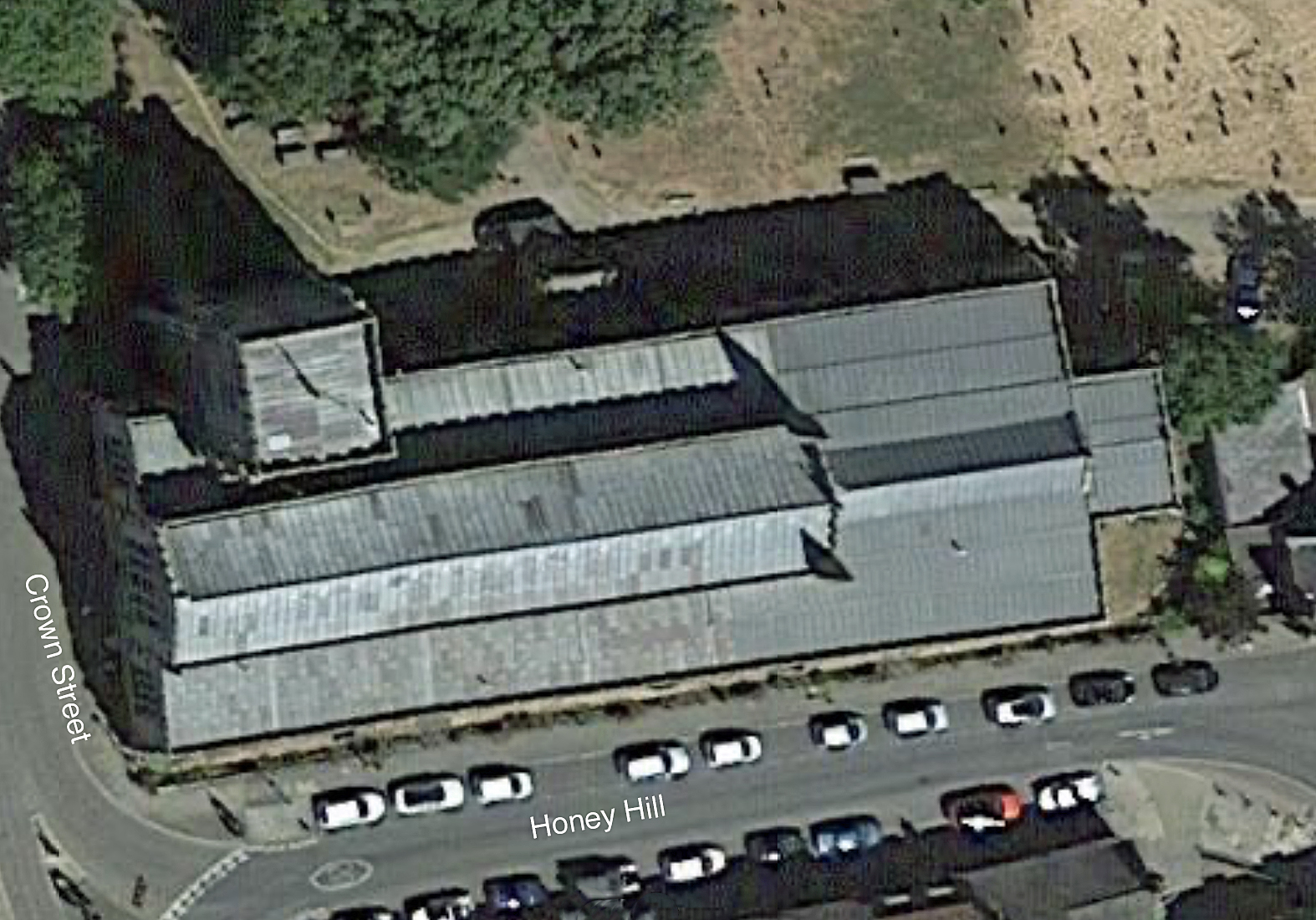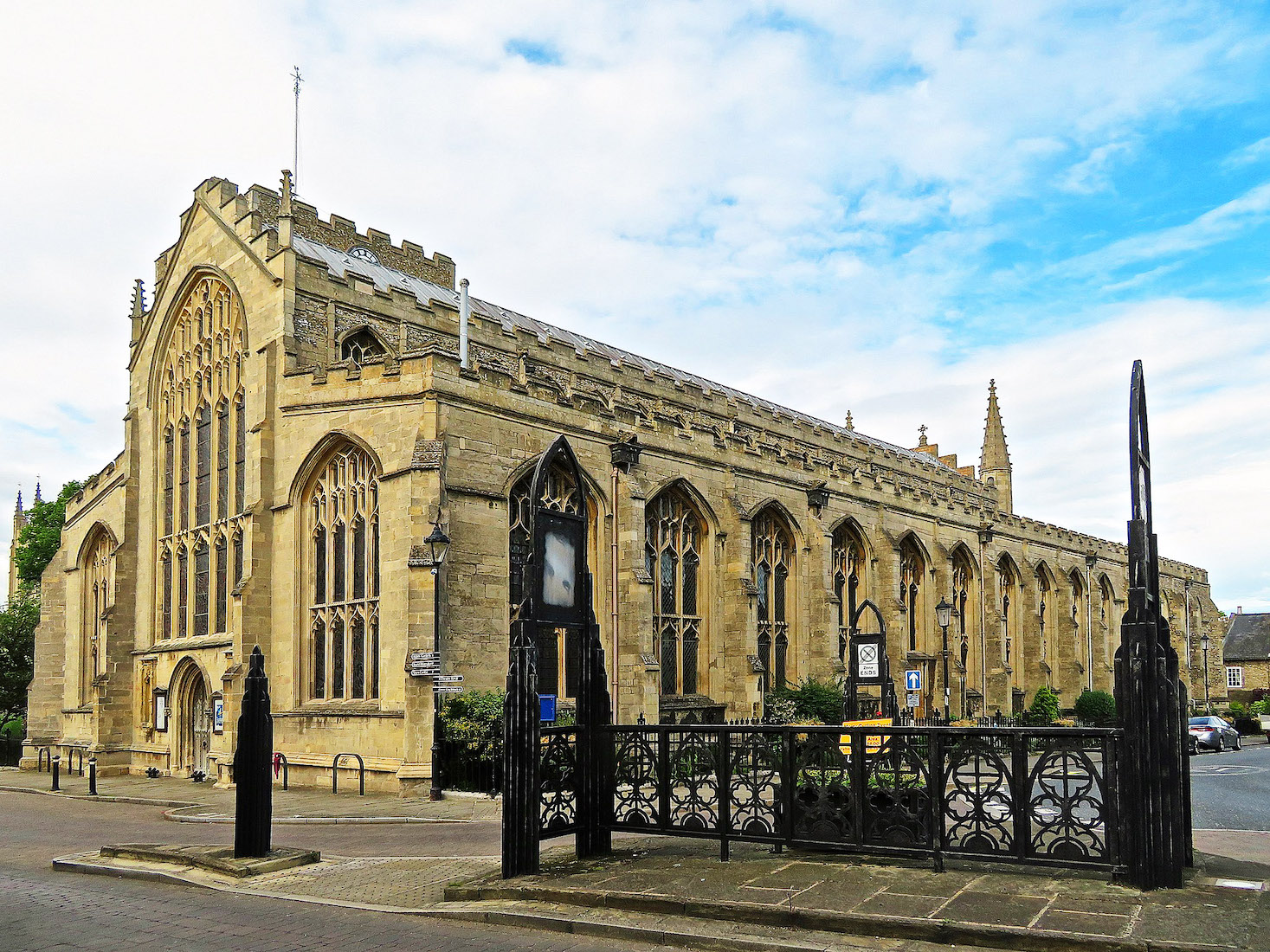The main contributors of photos here are ‘Glass Angel’ and Aidan MacRae Thomson. [See main Introduction.] There are also several photographs taken from a Virtual Tour of the Church by Google: Carl Lamb. I am delighted to have the ready involvement of these photographers in this project. Their contributions are indicated by the initials GA, AMT, and CL respectively. Further details are given in the Conclusion.
A brief history of this Church is given below. However, if you want to begin your tour of the Church immediately, tap / click on START . You can also access intermediate points in the tour by a tap / click on the following links:
NOTE ON MAGNIFYING IMAGES
With this website format the images are large enough for most purposes. If there is a need for greater magnification of an image, go to the identical photo on the appropriate website listed in the Conclusion.

SATELLITE VIEW
We notice that the axis of this Church is almost exactly geographically east–west with the sanctuary at the eastern end. We can then easily identify the geographical directions with our liturgical directions which place the sanctuary in an exact East direction (with a capital E).
The plan of the Church is almost exactly rectangular, with a small extension for the sanctuary to the East. A large square tower intrudes to the Northwest, and there is a small Northern porch. To the West is a high central nave with two covered aisles at the sides; to the West a chancel leading to the sanctuary, and two chapels – a Royal Anglian Regiment Chapel to the North and a Lady Chapel to the South.
The Church is closely bounded by the roads Crown Street to the West and Honey Hill to the South. To the North and East a vast park area extends, including St Edmundsbury Cathedral and the old Abbey Gardens.
In our tour, we shall begin near the West wall of the Church facing Crown Street, and walk around the Church in a clockwise direction. Entering the West doors, we then explore the nave, Lady Chapel, sanctuary and chancel, and finally the Royal Anglian Regiment Chapel. There is much to discover here!
HISTORY
Years Built: 1424 – 1446
Address: Honey Hill, Bury St Edmunds, England
Simon Jenkins’ Rating: ***
55 Major British Churches: √
St Mary’s Church is the civic church of Bury St Edmunds and is one of the largest parish churches in England. It claims to have the second longest aisle, and the largest West Window of any parish church in the country. It was part of the abbey complex and originally was one of three large churches in the town (the others being St James, now St Edmundsbury Cathedral, and St Margaret’s, now gone).
The present church is not the first building to stand on the site, the first being built in the 7th Century, founded by King Sigeberht. ‘Heritage Suffolk’ describes it as having been built c. 1125 by Abbot Anselm to replace the previous church of St Mary which was demolished to make space for the construction of the south wing of the Abbey Church. However, nothing survives of the Norman church and the oldest part of the existing building is the decorated chancel (c. 1290). There was a major renovation between the 14th and 16th centuries and it is at this point that the nave, its aisles and the tower were built. It is also at this time that Mary Tudor, favourite sister of Henry VIII, died and was buried in the church. Her tomb is in the sanctuary directly to the north of the Lord’s table. The church, however, is dedicated to Mary, the mother of Jesus, and not, as some mistakenly believe, to Mary Tudor.
During the 16th century, John Notyngham and Jankyn Smyth, two wealthy local benefactors, bequeathed large amounts of money to the church. These funds contributed to building the north and south quire aisles, now the Lady Chapel and Royal Anglian Regiment (formerly Suffolk Regimental) chapel, two chantry chapels and a north and south porch. The south porch was removed during a restoration in 1830s, and St Wolstan’s chapel was added on the north-west side. The interior has been updated with modern utilities since then as well.
The church is awarded three stars by Simon Jenkins in his 1999 book ‘England’s Thousand Best Churches’. Jenkins writes:
The interior has one of the largest and most exhilarating naves in the country. Arcades of ten majestic bays march towards the chancel, each rising on continuous mouldings with only the tiniest of capitals. The unusually wide hammer beam roof is a marvellous survival. Eleven pairs of angels guard the space below, attended by lesser angels on the wall-plates and by saints, martyrs, prophets and kings, 42 figures in all. On the frieze a medieval menagerie takes over, with dragons, unicorns, birds and fish. ... The south chapel is littered with pleasant brasses. The north aisle by the tower has its memorials spectacularly displayed. They climb up the wall to the ceiling, a Valhalla of Bury worthies.
Choirs
St Mary’s Church has a traditional Anglican choir of boys and gentlemen, with a history dating back to as early as 1354, after which there are many references to singers and ‘childs with a surplys’. This tradition is believed to have remained untouched even during Puritan times. The choir has more recently toured Spain, Turkey, Cyprus, Israel and Malta, France, Belgium and Germany, and has sung evensongs at cathedrals including Canterbury and St Paul’s. The Choir is affiliated to the RSCM, and choristers are trained using the RSCM ‘Voice for Life’ scheme.
The year 2010 saw the inception of St Mary’s Ladies’ Choir, and the Girls’ Choir began in 2015. Although they are quite separate from the Church Choir, they join together for large services, namely Easter, Harvest, Advent and Christmas.
Organ
There is evidence for an organ in St Mary’s as early as 1467, in the will of John Baret which states that ‘ye pleyers at ye orgenys [to be paid] ij d’. Another bequest from 1479 grants the organist 10d.
The main organ is a four-manual instrument with 79 speaking stops. It was built initially by John Gray of London in 1825, and rebuilt and enlarged in 1865, 1885 and 1898 by J W Walker. There were later rebuilds by Hill, Norman and Beard in 1931, John Compton in 1959 and Kenneth Canter in 1988, the latter included providing a mobile console.
A separate four-stop chamber organ, possibly by John Harris (son of Renatus Harris, c. 1677 – 1743) is placed in the Suffolk Regimental Chapel and is ideal as a continuo instrument where the main organ would be inappropriate.
https://en.wikipedia.org/wiki/St_Mary%27s_Church,_Bury_St_Edmunds



